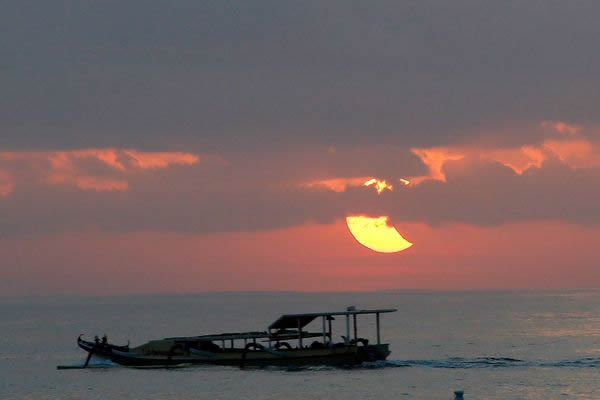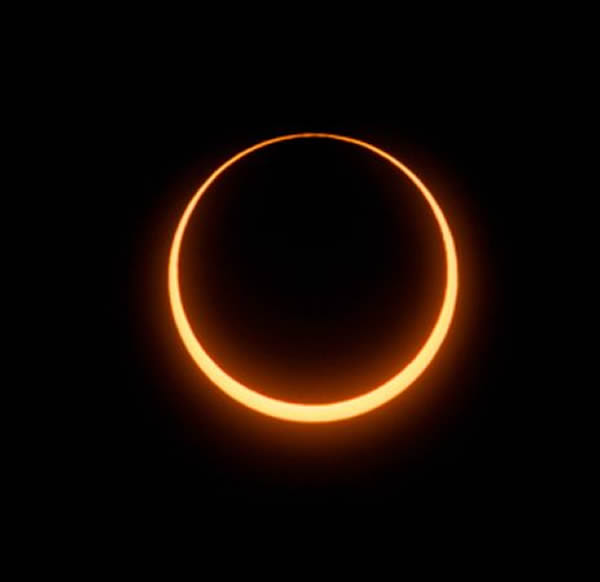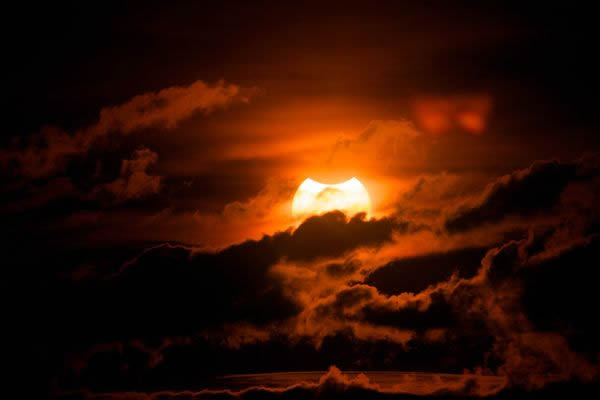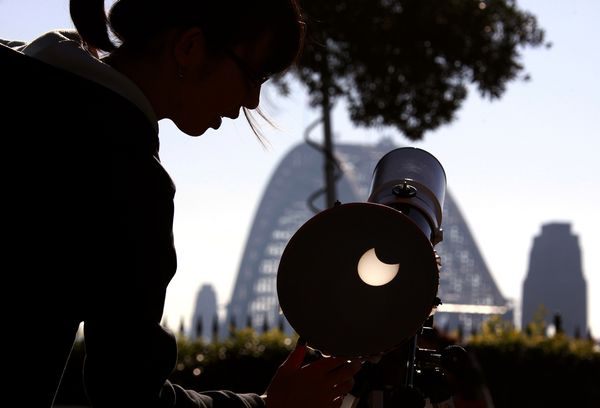Pictures: Solar Eclipse Creates Ring of Fire
Obscured
Passing clouds play hide-and-seek with the early morning sun while it undergoes a partial eclipse off a beach in Bali, Indonesia.
Indonesia, like most of the populated areas across the Pacific region, saw the dark disk of the moon take a bite out of the sun.
Ring of Fire
The annular eclipse reaches full swing early morning in the Northern Territory, Australia.
Lasting just over four minutes, the bright ring of sunlight marks the most spectacular part of an annular eclipse along the path where the moon passes completely onto the sun's disk.
"The clouds thinned considerably before annularity, which was observed in pretty clear sky," said Pasachoff, who took this photograph.
"The air cooled noticeably when the sun was almost entirely covered, and the shadows sharpened because they were being cast by a thin crescent of sun," he said.
Peek-a-Boo
Viewers across some parts of the path of annularity in Australia had to dodge passing clouds, but patience was rewarded with spectacular views like the one above, from Tennant Creek, Australia.
Sky-watchers as far north as the Hawaiian Islands were able to see more than a third of the sun's disk disappear behind the moon.
Moon Bite
A woman adjusts a telescope showing the first solar eclipse of 2013, as seen Friday from Observatory Hill in Sydney, Australia.
The event is known as an annular eclipse, when the moon moves directly between the Earth and the sun, producing a striking ring of fire effect. During annular eclipses, the new moon's apparent diameter is smaller than the visible disk of the sun. (See annular eclipse pictures.)
Since the moon's orbit is elliptical, its distance from Earth changes periodically. During an annular eclipse, the moon is farther from Earth, so its apparent size is smaller than the solar disk.
Today's annular eclipse first appeared over Western Australia at sunrise and swept across portions of Papua New Guinea and the Solomon Islands, before crossing much of the Pacific Ocean.
Eclipse expert and National Geographic grantee Jay Pasachoff staked out a viewing spot in Australia's outback along the path of annularity along with over a hundred other eclipse-watchers from around the world.
"We can report good success in observing 4 minutes and 20 seconds of full annularity at the eclipse today," he said in an email to National Geographic.
"Much of the eclipse was viewed through thin clouds, though rarely after the first few minutes was the sun obscured."
—Andrew Fazekas(Published May 10, 2013)















